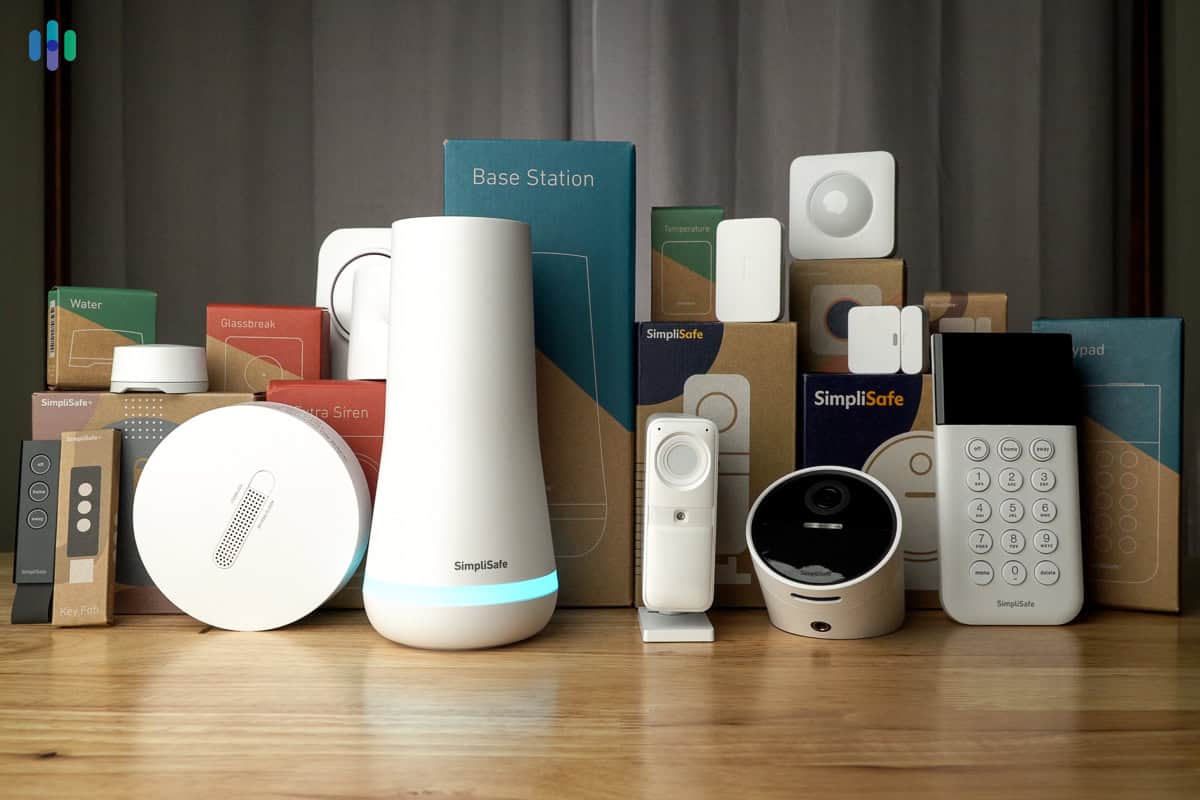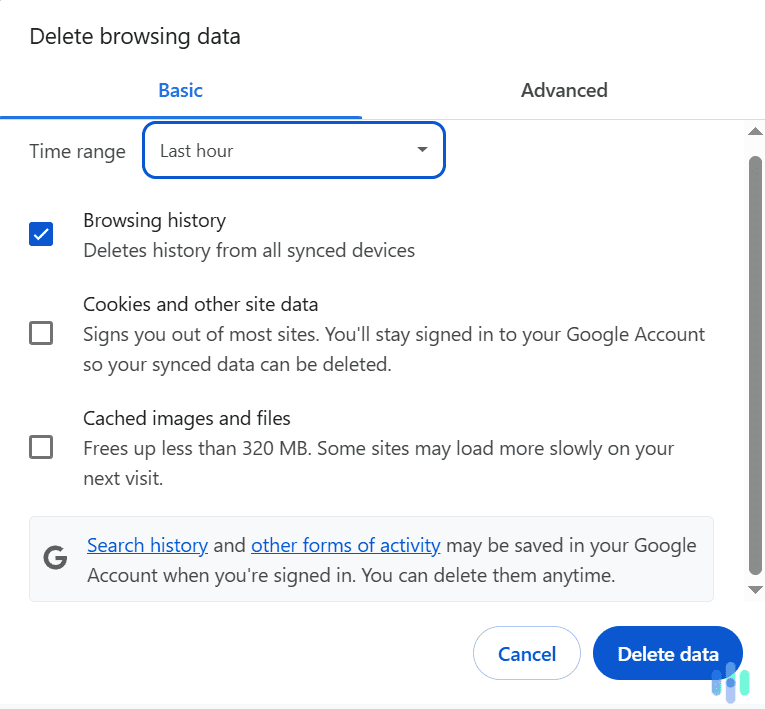As useful as they can be, smoke alarms can also be annoying. That’s specially true for those that just won’t stop chirping or those that give you constant false alarms. If you’re running out of options, you might even be considering just turning them off. We’ll guide you on how to do just that.
Before that, however, we want to remind you that smoke alarms are a necessity. They are life savers. The National Fire Protection Association estimates that around three of five home fire deaths occur in homes with no working fire alarms – including smoke alarms that have been turned off. With that in mind, we strongly advise turning off your smoke alarms only temporarily and turning them back on once the issue has been fixed.
If that’s clear, let’s start with this guide.
Pro Tip: Got a case of the constant chirps? If so, see how to get your smoke alarm to stop chirping instead. You’d be surprised how easy it actually is to deal with that annoying problem.
How To Turn Off a Smoke Alarm
If you absolutely want to turn off your smoke alarms permanently – for example, to replace them with new ones – the process depends on which smoke alarms you have.
Hardwired Smoke Alarms
If your smoke alarms are wired to your home’s electrical wiring, simply turning off the circuit breaker will do the trick.
- Locate the main breaker panel for your home.
- Identify which circuit breaker powers your smoke alarms. Each breaker should be labeled, so look for something that says “smoke alarm” or something similar.
- Turn off the circuit breaker for your smoke alarms. If your smoke alarms don’t have battery backup, doing that will turn all of them off.
- If your smoke alarms have battery backup, go to the faulty smoke alarm, twist off the cover.
- Once the wires are exposed, carefully disconnect the smoke alarm. Make sure the circuit breaker is off before doing this.
- Under the cover, you should find a battery. Remove it to turn off the smoke alarm.
Battery-Powered Smoke Alarms
If you have smoke alarms that completely run off battery power, turning them off should be simpler.
- Locate the faulty smoke alarm.
- Remove the cover to expose the battery terminal.
- Remove the battery. That should turn off your battery-powered smoke alarm.
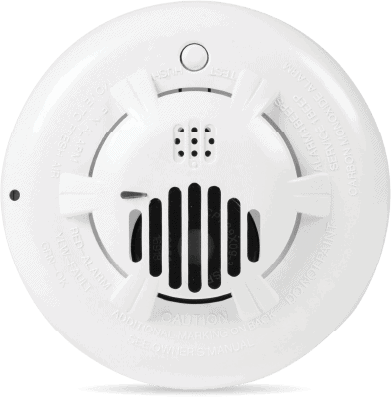
How To Temporarily Silence Alarm
The steps above are for permanently turning off a smoke alarm, which is helpful if you’re going to set up a new unit. However, in most cases of incessant chirping and false alarms, you don’t need to completely turn off your smoke detectors. Temporarily silencing them will do the job.
Now, the steps for silencing smoke alarms vary from one brand to another. The steps below are for Kidde devices, which is a popular smoke alarm brand. Often, though, the same general steps apply if you want to temporarily silence a smoke alarm from any brand. And even better, they apply to both hardwired and battery-powered smoke alarms.
Silence the Alarm in 3 Steps
- Press the hush/silencing button. It will silence the entire interconnected system. The button may also say “test.” It should silence all the alarms immediately unless there’s still smoke and debris.
- It will reset in eight minutes, given that the smoke and debris have dissipated. You can press the hush button repeatedly until the air is clean.
- To end the hush period, push the test/hush button again.1
Why Smoke Alarm Is Going Off
These are some reasons your smoke alarm might be going off aside from actual smoke or a fire:
- Low battery
- Insects or dust in alarm
- Silence button pushed by accident
- Incorrect wiring on AC or AC/DC smoke detectors
- Power interruptions (on hardwired alarms)2
TIP: To clean your smoke alarm, use a compressed air canister (like one you might use to clean your keyboard). Dust and debris can cause false alarms.
How Often To Change Batteries on Smoke Alarm
To avoid any further issues in the future, we strongly recommend changing out the batteries on a regular basis. The actual frequency will depend on the manufacturer, but most of the time, we change out our smoke alarm batteries at least once a year. One nifty trick we’ve discovered is that it’s easier to remember to change the batteries if you sync the schedule up with daylight saving time. That is, if your smoke alarm’s recommended battery replacement interval is yearly. Some smoke alarm batteries must be replaced every six months.
How To Reset and Clean Smoke Alarms
Are red and green lights flashing on your smoke alarm? If there are no obvious signs of smoke or fire, then you should reset it and clean it to prevent future false alarms.
Hardwired
- Disconnect the alarm and remove its battery.
- Holding the alarm by its edge, use a keyboard cleaner to remove debris on the side of the device.
- Press and hold the test button for five seconds.
- Reconnect the device to power and its backup battery. It will chirp once it connects to power.
Battery
- Remove the battery.
- Press and hold the test button.
- Reinstall the battery. It will chirp once when it reconnects to power.
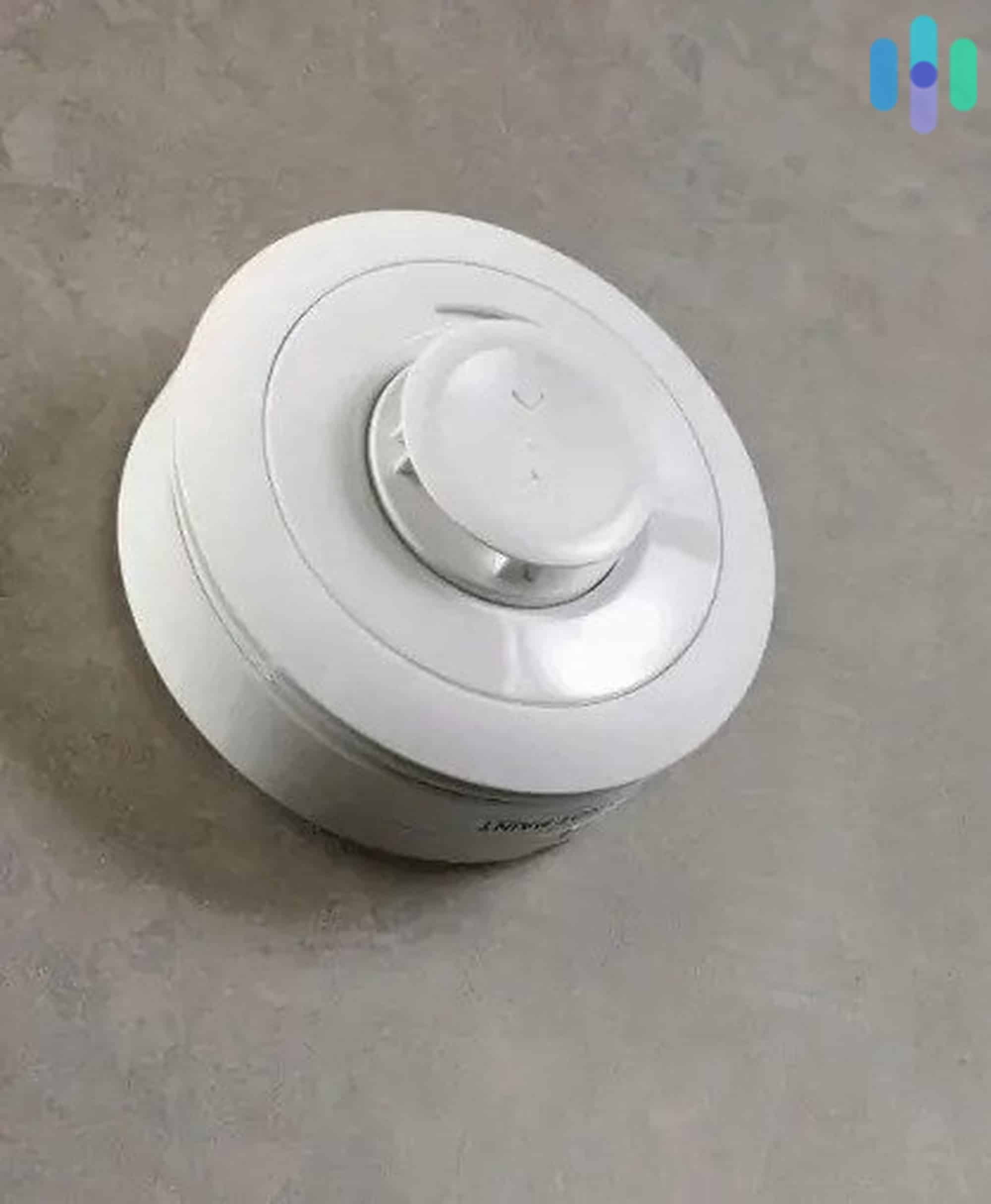
How To Get Rid of False Alarms
We’ve all had smoke alarms that go off when there’s not even smoke, let alone fire. To fix the issue, you have to get to the root of the problem (after you silence the annoying alarm, of course).
Possible Causes of False Alarms
These are some situations and conditions that can cause false alarms in smoke detectors:
- The alarm is too old. If your alarm is 7 to 10 years old (or more), it’s time to remove and replace it.
- The alarm is dirty. Bugs, dust, or debris in your smoke alarm’s sensing chamber could be triggering it falsely.
- The alarm is close to steam, sunlight, etc. If your alarm is near HVAC vents, fluorescent lights, steam, moving air, or sunlight, move it away from the fireplace, bathroom, kitchen, or furnace.
- You’ve had recent power issues. If you have a hardwired smoke alarm, a power outage could trigger the alarm; typically, it will sound briefly when the power is interrupted.
- The alarm is installed over a junction box. You shouldn’t install wireless smoke alarms over junction boxes, as this could trigger false alarms.
- The alarm is exposed to humidity. Humidity can cause false alarms, so move your detector away from bathrooms or other high-humidity areas in your home.
- An interconnected alarm went off. If your smoke alarm is part of a larger AC or AC/DC alarm system (and no, we’re not talking about the band), another unit triggering may cause your alarm to sound off as well.
- Large appliances are on the same circuit. Another issue could be an appliance on the same circuit, like a vacuum cleaner.
- The heating was turned on. When you turn your heat on for the first time of the season, dirt, construction debris, drywall dust, oil, and residue in your furnace and ductwork can cause smoke, triggering your alarm.
- The alarm malfunctioned. If you’ve gone through all of the above causes and none of them apply, you could have a malfunctioning device.3
How To Get a New Smoke Alarm
If your smoke alarm is old or malfunctioning, it might be time to replace it. Here’s what to look out for.
Types of Fire Alarms
First, get a dual alarm with sensors for both fast-moving (ionization) and slow-moving (photoelectric) fires. Fast-moving fires include a candle setting a curtain ablaze, while slow-moving fires include electric fires that start in walls.
| Type of smoke alarm | Ionization | Photoelectric | Dual |
|---|---|---|---|
| Fast-moving fires | Yes | No | Yes |
| Slow-moving fires | No | Yes | Yes |
Cost
Of the smoke detectors that we’ve tested out, the average cost is around $44, varying by make, manufacturer, and capabilities.
Power
You can either get a battery-powered or a hardwired smoke detector, the latter of which will most likely have a backup battery. If it’s the former, take battery life into consideration.
Noise Level
It’s best to get a smoke alarm of at least 85 decibels so you can hear it even when you’re sleeping. Better yet, all of your smoke alarms should be interconnected so that if one goes off, they all go off. It’s best to get either an electrician or the fire department to install hardwired alarms, though.
NOTE: 85 decibels is louder than a garbage disposal but not as loud as a blender.4
Operating Temperature
You’ll need to keep your home at a certain temperature range to suit your smoke alarm, typically about 32 to 100 degrees Fahrenheit. Below or above those temperatures, the alarm will stop functioning.
CO Detection
These days, most smoke alarms are bundled with CO alarms, which detect deadly carbon monoxide. If you don’t already have one, we recommend buying a combination smoke/CO alarm like the Nest Protect, one of the best smart home devices available. Learn more about how to install CO alarms.
Extra Sensing
Speaking of the Nest Protect, this device senses temperature, humidity, occupancy, and ambient light in addition to smoke and CO. While these features aren’t typical of smoke alarms, they’re cool extras to look out for if you’re willing to spend considerably more.
Self-Testing
Many smart smoke detectors test themselves periodically and automatically, ensuring that they’re good on power and are connected to professional monitoring, if applicable.
Smart Platform Integrations
It’s no secret that we love living in smart homes, where our smart lights turn on automatically, our smart garage door opens for us at the end of the day, and our smart locks make sure we’re always safe when working from home. So why wouldn’t our smoke alarm be smart as well? We prefer alarms that work with our voice assistants, allowing for voice commands as well as home automation. For us, that meant that our doors unlocked when our smoke alarm went off, allowing an easy exit.
Alert
The average smoke alarm has sound alerts, but others have voice alerts, color-coded light alerts, and even low-battery alerts.
Silencing
Since false alerts are the name of the game, it’s important for smoke alarms to have silencing features.
Certification
The smoke alarm should be certified by Underwriters Laboratories (UL) or a state’s fire marshal.
App
If the smoke alarm is an IoT device, it should have a mobile app free of bugs. Check out the ratings and reviews on your mobile device’s official app store before purchasing a smoke detector.
Monitoring
The most protection means signing up for a smoke alarm with 24/7 professional monitoring. That means that if your alarm goes off and you’re not home and/or miss your mobile notification, someone can contact the fire department for you, no matter the time or day. Vivint is one company that offers professionally monitored smoke alarms. For more information, read our page on Vivint’s pricing.
What Fire Alarms Sounds Mean
Depending on the make and model of your fire alarm, different sounds can mean different things. The companies First Alert and Kidde make many smoke alarms in the U.S., so we broke it down by those brands.
First Alert
- Three loud beeps: Alarm detects smoke.
- Four loud beeps: Alarm detects dangerous levels of CO.5
Kidde
- Loud, continuous alarms: Alarm detects smoke.
- Chirping after 30 to 60 seconds: Battery may need replacement.
- Chirping without a regular pattern: Battery is low.6
Where To Install Smoke Alarms in Your Home
As important as it is to know where to install smoke alarms in your home, it’s equally important to know where not to install them.
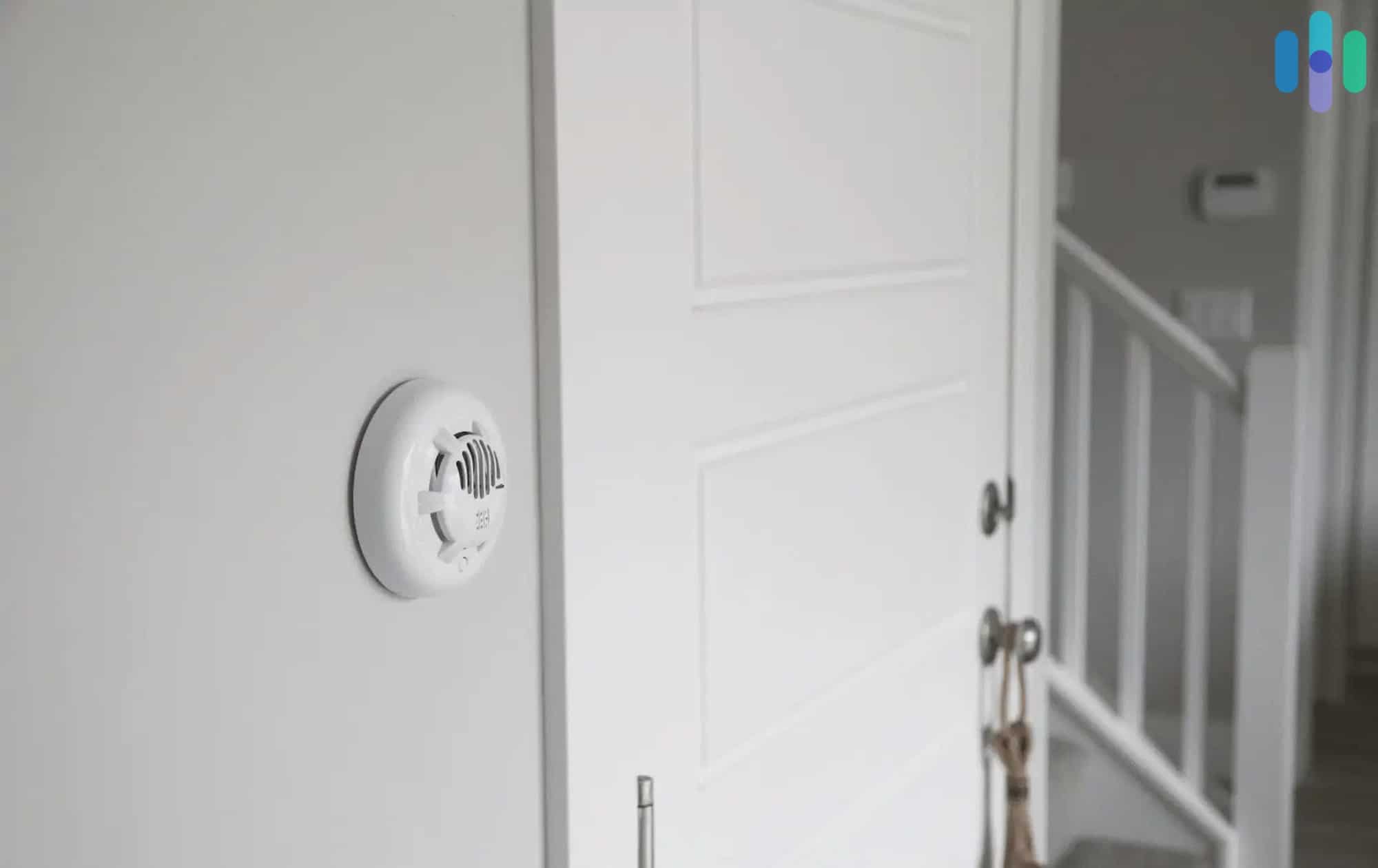
Where to Install
- Inside and outside of each bedroom or sleeping area
- On every level of your home, including the basement
- Either on the ceiling or high on the wall (within a foot of the ceiling)
- Near your living room, family room, or den (if the level doesn’t already include bedrooms)
- Near the stairway to the upper level
- In the basement, on the ceiling at the bottom of the stairs
- At least 10 feet away from cooking appliances
- If ceilings are pitched, within 3 feet of the peak (but not within the peak’s apex)
Where Not to Install
- Less than 10 feet away from cooking appliances
- Less than 12 inches from the ceiling
- Near doors, windows, or ducts, as drafts could cause false
- Near a kitchen, fireplace, furnace, or bathroom
How To Maintain Smoke Alarms
According to the U.S. Fire Administration (USFA), here’s how to maintain different types of smoke alarms by how they’re powered:
| Type of power | 9-volt battery | 10-year lithium battery | Hardwired |
|---|---|---|---|
| Test monthly | Yes | Yes | Yes |
| Replace battery | At least once a year | N/A | At least once a year |
| Replace smoke alarm | Every 10 years | According to manufacturer’s instructions | Every 10 years |
What if My Smoke Alarm Beeps When I Cook?
You’re in the middle of roasting some delicious butternut squash, and then your smoke alarm goes off, even though there’s very little smoke involved. We’ve all been there. Here’s what to do, according to the USFA:
- Don’t take the battery out.
- Open a window or door.
- Wave a towel at the detector.
- Press the silence button.
- Move the alarm away from the bathroom or kitchen by several feet.
Recap
A beeping smoke alarm is loud, annoying, and obtrusive, but ultimately, it’s better to have a smoke alarm with false alerts than a smoke alarm with no alerts at all. We hope we answered all of your questions about turning off your smoke alarm, and if we didn’t, continue reading below.
FAQs
Given the barrage of questions we’ve gotten about how to stop your smoke alarm from chirping, here is some additional information.
-
How do you get a smoke alarm to stop chirping?
To get a smoke alarm to stop chirping, press its hush/silencing button. Then, figure out what caused the false alarm, such as humidity, and fix the problem, like by moving it away from a bathroom.
-
Will a smoke alarm eventually stop chirping?
A smoke alarm will eventually stop chirping if it stops detecting smoke or if the condition that created the false alarm is fixed. For example, if dust and debris is causing your alarm to sound, cleaning it will stop it from chirping.
-
How can you turn off a fire alarm?
You can turn off a fire alarm by pressing its silencing button. However, we don’t recommend removing the device or the batteries.
-
How do I get my fire alarm to stop beeping every 30 seconds?
To get your fire alarm to stop beeping every 30 seconds, press the silencing button, or find the cause of the false alarm and correct it.



